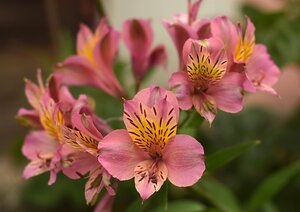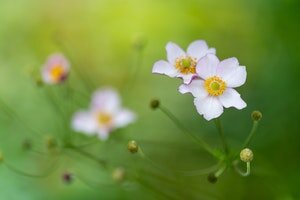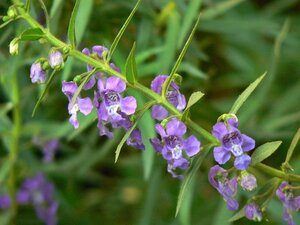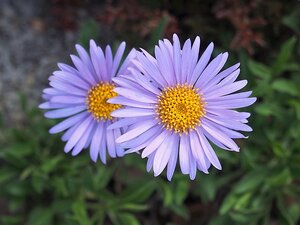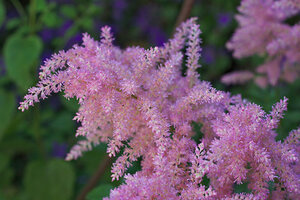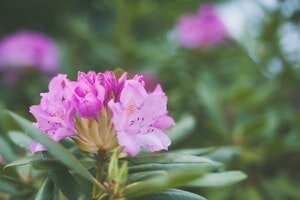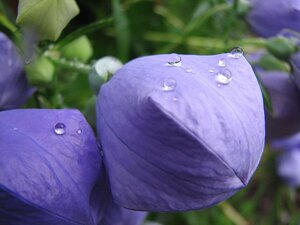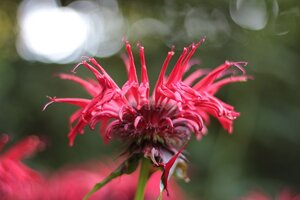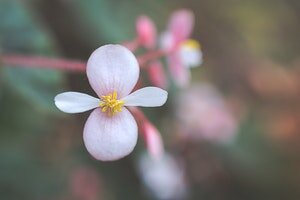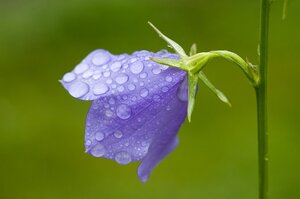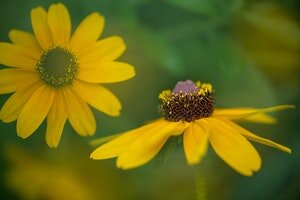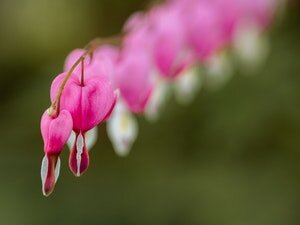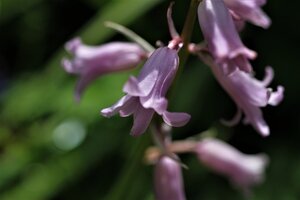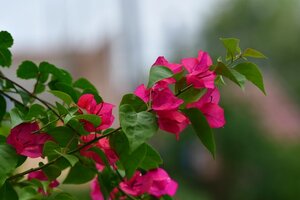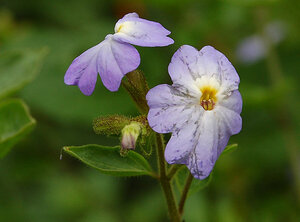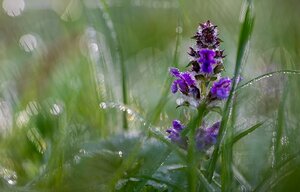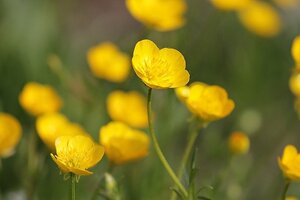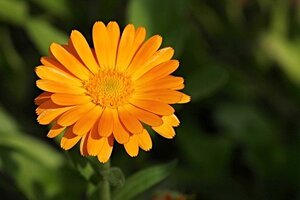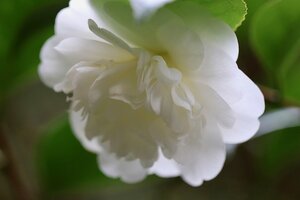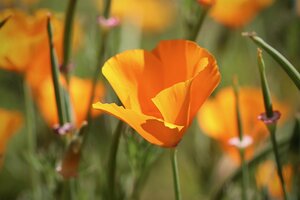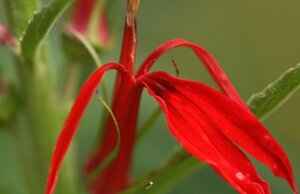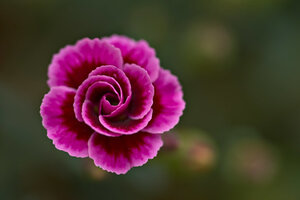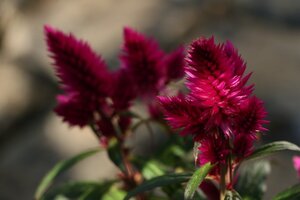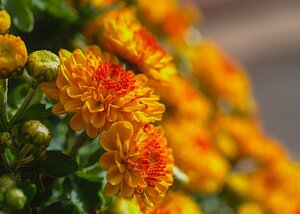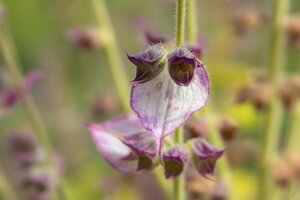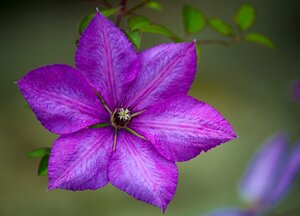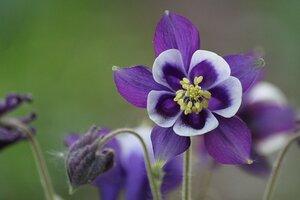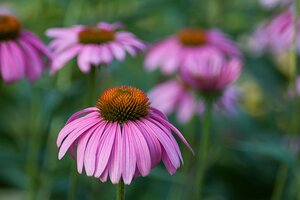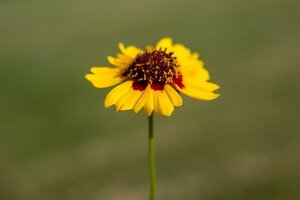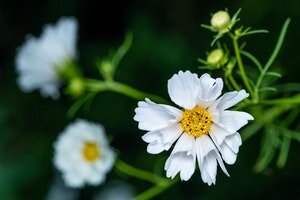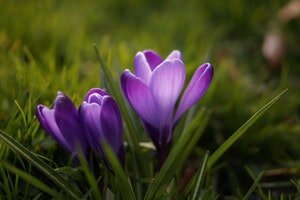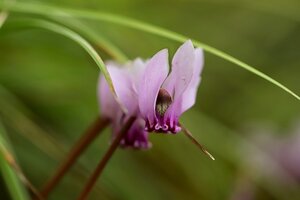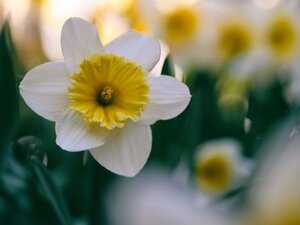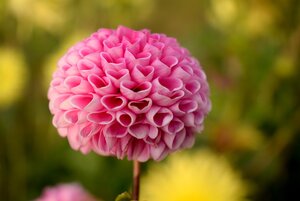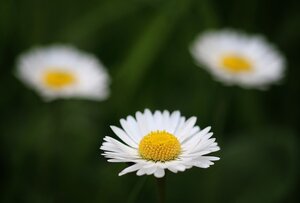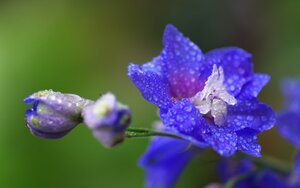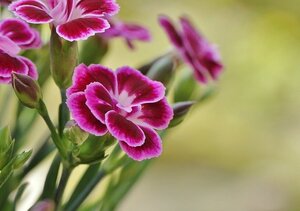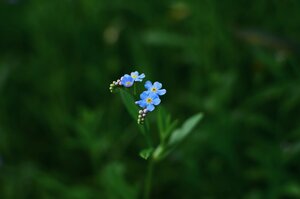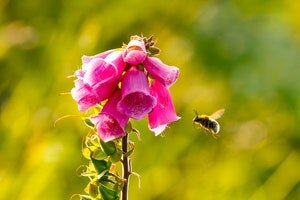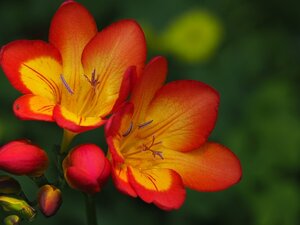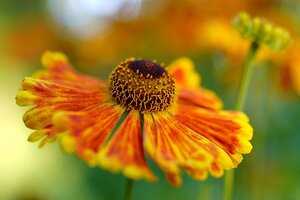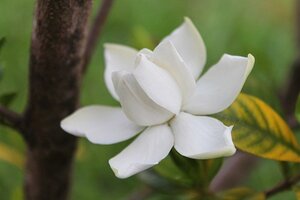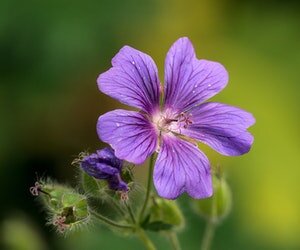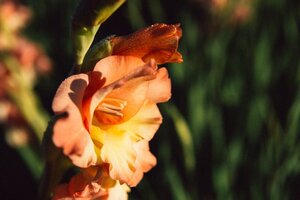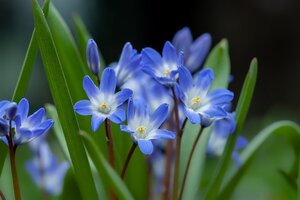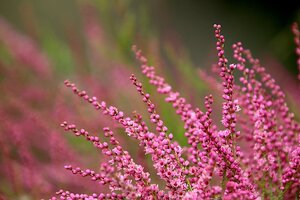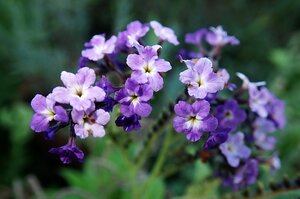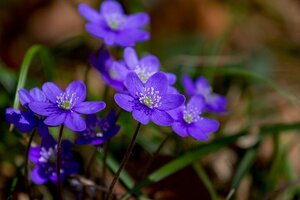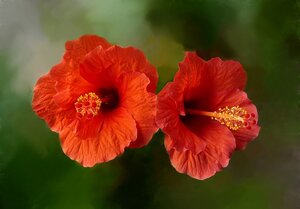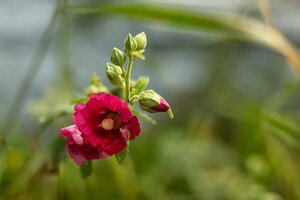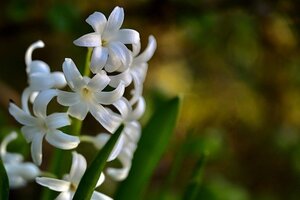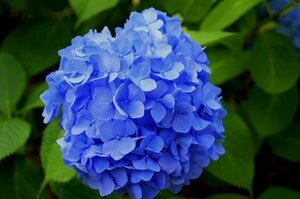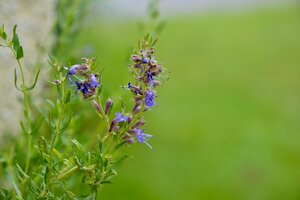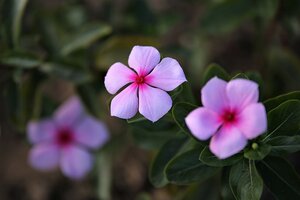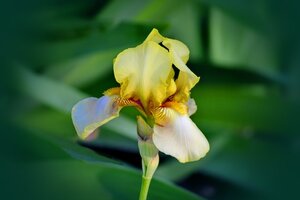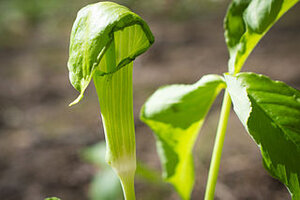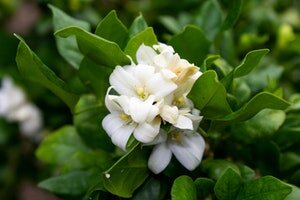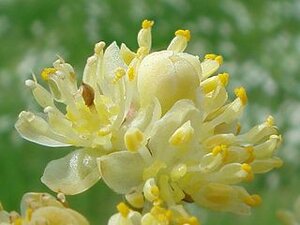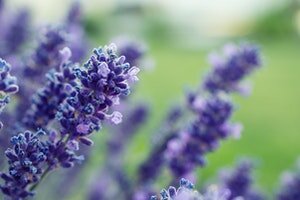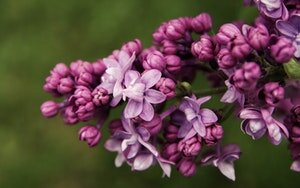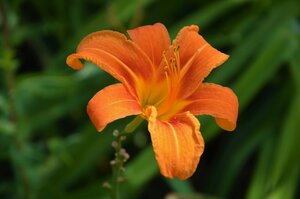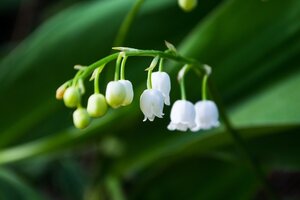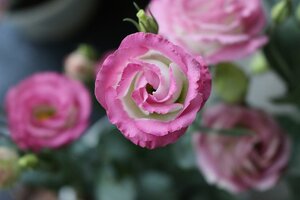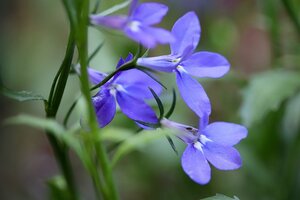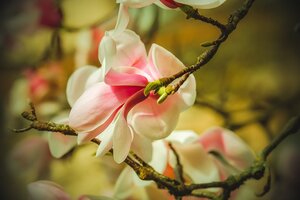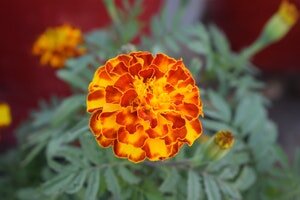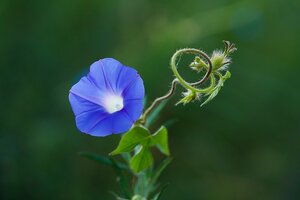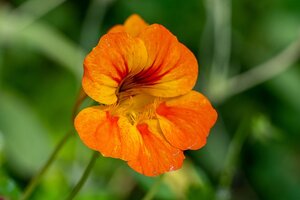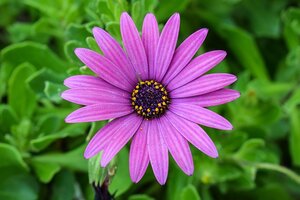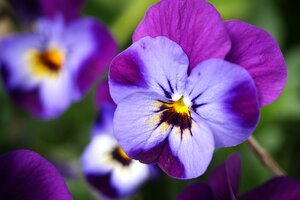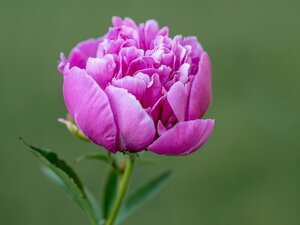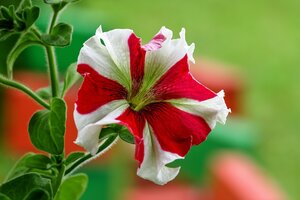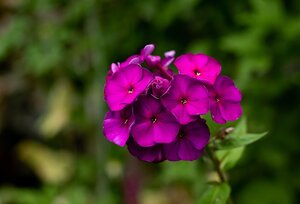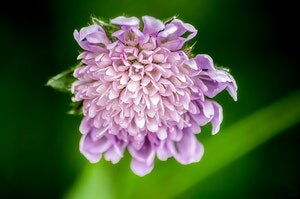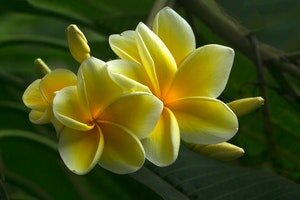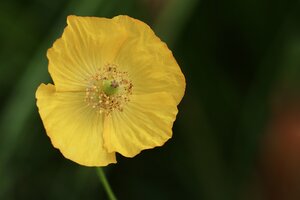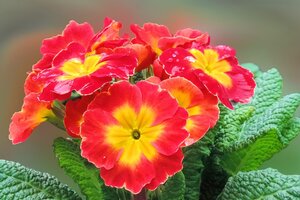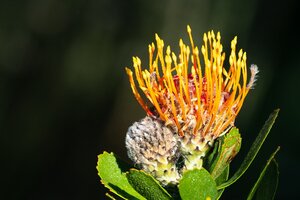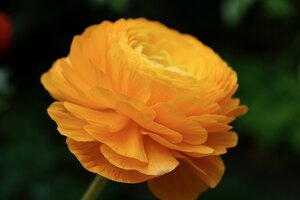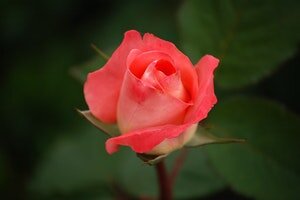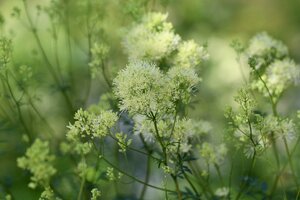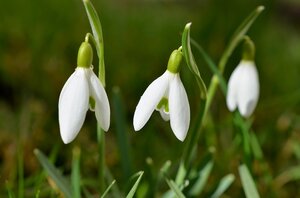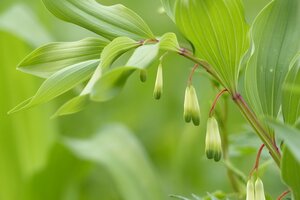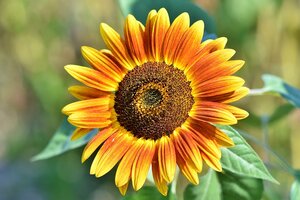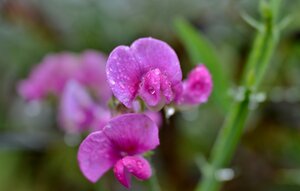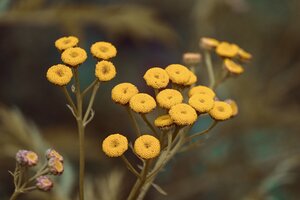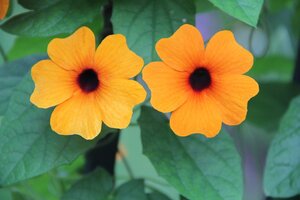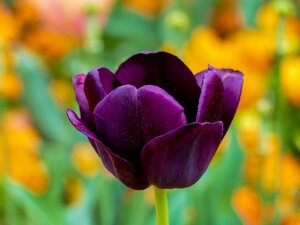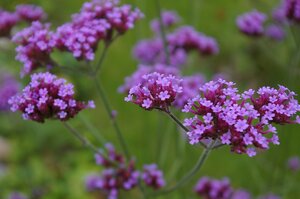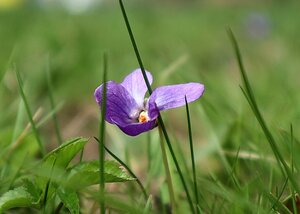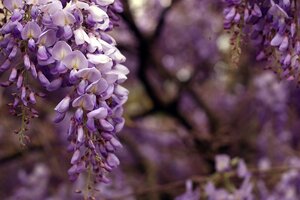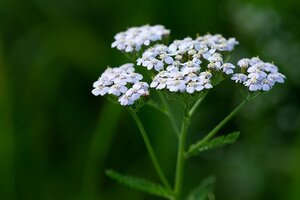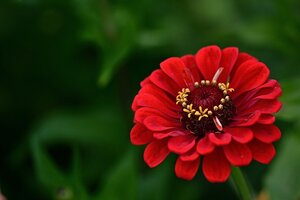If you’re in need of a quick reference guide to the most common types of flowers, look no further. Our guide offers gardeners the features and basic growing needs of 100 of the most popular and widely-available flowers. We’ve gone all the way from A-Z, so find your favourites here! If you’re looking for a buying guide to flowers, check out our florist’s guide to the most common types of flowers.
The Most Common Types of Flowers
Allium (Allium)
Allium are distinctive and elegant, with long stems and round heads. Colours range from pinks, purples and blue to yellow to white. The heads are up to 12″ in diameter. Its many varieties grow easily from bulbs, and are deer and drought-resistant.
Type
Perennial
Sun
Full
Season
Spring-summer
Water
Low-moderate
Height
1-4 feet
Soil
Well-drained
Hardiness Zone
3-10
Spacing
8-12 inches apart
Alstroemeria (Alstroemeria)
Also known as the Peruvian lily, alstroemeria make gorgeous, long-lasting cut flowers. They come in a rainbow of colours, typically with speckled inner petals. They’re easy to grow from tubers and divide well. They’re also drought and deer resistant.
Type
Perennial
Sun
Full
Season
Summer-fall
Water
Moderate
Height
1-3 feet
Soil
Well-drained, fertile
Hardiness Zone
7-10
Spacing
24 inches apart
Anemone (Anemone)
Anemones are prolific bloomers that flower either in spring or fall, depending on variety. Their colours go from white and pale pinks to deep burgundies and purples, with dark or yellow centres. They grow well from corms, spread easily and divide well.
Type
Perennial
Sun
Full sun-partial shade
Season
Spring or fall
Water
Moderate
Height
0.5 – 4 feet
Soil
Well-drained, fertile
Hardiness Zone
3-9
Spacing
9-12 inches apart
Angelonia (Angelonia angustifolia)
Angelonia grows easily from seed. With upright flower spikes, their blue, white and pink flowers are reminiscent of a tiny snapdragon. When cut back after a first flowering, they’ll flower a second time. Angelonia is deer resistant and pollinator-friendly.
Type
Annual
Sun
Full
Season
Summer-fall
Water
Low-moderate
Height
1-2 feet
Soil
Well-drained
Hardiness Zone
9-11
Spacing
18 inches apart
Aster (Astereae)
A favourite of butterflies and other pollinators, Asters can bloom well into the fall. Colours range from white through pinks to red and purples. They can be grown from seed or already potted. Varieties can be compact or large and bushy.
Type
Perennial
Sun
Full sun-partial shade
Season
Spring or fall
Water
Moderate
Height
1-6 feet
Soil
Well-drained
Hardiness Zone
4-8
Spacing
12-48 inches apart
Astilbe (Astilbe)
The unique, feathery flowers of the astilbe come in white, pinks and purples, with some very dark hues. Astilbe thrives in shade gardens, and attracts a number of pollinators. It’s difficult to grow from seed—start from divisions instead.
Type
Perennial
Sun
Partial sun-shade
Season
Spring-summer
Water
Moderate
Height
0.5-6 feet
Soil
Well-drained, moist
Hardiness Zone
3-9
Spacing
12-36 inches apart
Azaleas (Rhododendron)
There are thousands of varieties of azaleas, with flower clusters in white, yellow, red, pinks and purples. They can be evergreen or deciduous, ground-covering or bushy, low-growing or tree height. Grow them from cuttings or purchase them as shrubs.
Type
Annual/perennial
Sun
Partial sun-partial shade
Season
Spring
Water
Low
Height
1-25 feet
Soil
Well-drained, fertile
Hardiness Zone
3-9
Spacing
2-6 feet apart
Balloon Flower (Platycodon grandifloras)
The buds of this plant are charming to watch, swelling up like their namesake balloons before opening into blue, purple, white or pink flowers. They’re easy to grow from seed, and although they densely self-sow, they don’t like to be divided.
Type
Perennial
Sun
Full sun-partial shade
Season
Summer
Water
Moderate
Height
0.5-3 feet
Soil
Well-drained
Hardiness Zone
3-8
Spacing
12 inches apart
Bee Balm (Monarda)
Hummingbirds, butterflies and other pollinators love bee balm. Native to North America, its edible flowers can be red, white, pink or purple. It can be planted from seeds or as seedlings or divisions. Spreads easily and will need dividing.
Type
Perennial
Sun
Full sun-partial shade
Season
Summer
Water
Moderate
Height
2-4 feet
Soil
Moist
Hardiness Zone
3-9
Spacing
18-24 inches apart
Begonia (Begonia)
Grown indoors or out, the begonia is beloved of many gardeners. Their range of warm flower colours contrasts with often striking foliage. Begonias can be overwintered year to year, started indoors from tubers or cuttings, or purchased as potted plants. Deer resistant.
Type
Annual
Sun
Partial sun-shade
Season
Summer-fall
Water
Moderate
Height
6-18 inches
Soil
Well-drained
Hardiness Zone
8-10
Spacing
12 inches apart
Bellflower (Campanula)
The bell-shaped flowers that give these beauties their name are typically purple or blue, but can be found in shades of pink and white. You can grow them from rhizomes or from seeds. They’re drought-tolerant and spread easily, even invasively.
Type
Perennial
Sun
Full sun-partial shade
Season
Summer-fall
Water
Moderate
Height
0.5-3 feet
Soil
Well-drained
Hardiness Zone
3-8
Spacing
12-24 inches apart
Black-Eyed Susan (Rudbeckia)
These familiar native wildflowers, with their yellow petals and dark centres, are tough little plants. They tolerate drought and poor soil, reseed themselves, divide well and are a favourite with pollinators. They’re also easy to grow from seed.
Type
Biennial/Perennial
Sun
Full-partial sun
Season
Summer-fall
Water
Low-moderate
Height
1-3 feet
Soil
Well-drained
Hardiness Zone
3-9
Spacing
12-18 inches apart
Bleeding Heart (Dicentra)
The unforgettable flowers of the bleeding heart plant brighten the shadiest of spots. They can be grown from seed or divisions. Although they die back in summer, some will regrow in fall. They’re also deer resistant and low-maintenance.
Type
Perennial
Sun
Partial shade-shade
Season
Spring
Water
Moderate
Height
1-3 feet
Soil
Well-drained, moist
Hardiness Zone
3-9
Spacing
12-24 inches apart
Bluebells (Hyacinthoides)
Iconic bluebells are a springtime favourite. Start from bulbs rather than seeds for faster flowering. They’re slow to establish and may not flower the first year after planting. They spread easily, divide well and are resistant to wildlife of all kinds.
Type
Perennial
Sun
Partial shade
Season
Spring
Water
Moderate
Height
12 inches
Soil
Well-drained
Hardiness Zone
5-7
Spacing
6 inches apart
Bougainvillea (Bougainvillea)
Bright bougainvillea comes with an enormous range of colourful bracts. This vine grows and flowers profusely, although it is trainable. Be prepared to prune. Some varieties do well in containers and can be overwintered in cooler climates. Grow from cuttings or purchase potted.
Type
Perennial
Sun
Full
Season
Winter, spring and fall
Water
Low-moderate
Height
1-40 feet
Soil
Well-drained
Hardiness Zone
9-11
Spacing
3-10 feet apart
Browallia (Browallia)
Browallia’s blue flowers are a draw for pollinators and last a long time in the garden. You can also find white or purple blooming varieties. Browallia grows easily from seed and can be overwintered in cold climates.
Type
Annual
Sun
Partial-full shade
Season
Spring-fall
Water
Moderate
Height
1-2 feet
Soil
Well-drained
Hardiness Zone
9-11
Spacing
8-10 inches apart
Bugleweed (Ajuga reptans)
Bugleweed’s white, blue or purple spikes won’t be the showiest flowers in your garden, but as a groundcover, it adds lively interest to shady areas. This is a low-maintenance flower, but it spreads aggressively. Grow by seed, division or cuttings.
Type
Perennial
Sun
Partial sun-full shade
Season
Spring-summer
Water
Low
Height
6-9 inches
Soil
Well-drained
Hardiness Zone
3-9
Spacing
12 inches apart
Buttercup (Ranunculus)
Sunny buttercups can range in colour from white to orange to red, in addition to the classic yellow. A member of the ranunculus family, the wild varieties are often considered an invasive weed. Non-invasive species should be grown from tubers.
Type
Annual
Sun
Full sun-partial shade
Season
Spring-summer
Water
Moderate
Height
8-12 inches
Soil
Well-drained
Hardiness Zone
8-10
Spacing
4-6 inches apart
Butterfly Weed (Asclepias tuberosa)
Bees as well as butterflies are attracted to this native North American flower. As a native plant, it’s easy to grow from seed, drought resistant and very low maintenance. It blooms vigorously in shades of yellow, orange and red.
Type
Perennial
Sun
Full
Season
Summer-fall
Water
Low
Height
1-3 feet
Soil
Well-drained
Hardiness Zone
4-9
Spacing
18 inches apart
Calendula (Calendula officinalis)
An edible flower, calendula is bright and cheerful, with a warm colour palette. It’s easy to grow calendula from seed, and these bushy flowers will reseed themselves at the end of their long flowering season. Calendula repels pests like nematodes.
Type
Annual
Sun
Full sun-partial shade
Season
Spring-fall
Water
Low-moderate
Height
1-2 feet
Soil
Well-drained
Hardiness Zone
9-11
Spacing
6-12 inches apart
Calla Lilies (Zantedeschia)
Graceful and sleek, the beauty of the calla lily is as much in its shape as its wide array of colours. They’re simple to grow from rhizomes, which can be dug up in fall and replanted in spring.
Type
Annual
Sun
Full sun-partial shade
Season
Summer
Water
Moderate
Height
1-3 feet
Soil
Well-drained
Hardiness Zone
8-10
Spacing
12 inches apart
Camellia (Camellia)
Camellia’s evergreen foliage is lovely, but the large pink, white or red blooms are the stars of the show. Some varieties of this shrub can be grown in pots and overwintered. They can be grown from cuttings or purchased already potted.
Type
Perennial
Sun
Part shade
Season
Winter-spring or fall
Water
Moderate-heavy
Height
2-20 feet
Soil
Well-drained, fertile
Hardiness Zone
6-9
Spacing
5-12 feet apart
California Poppy (Eschscholzia californica)
These vivid, warm-coloured poppies are gorgeous in the garden, but immediately fall apart upon picking, so we can only admire them planted. California poppies are very easy to grow from seed and they self-seed, as well. Drought-tolerant, wildlife resistant and pollinator-friendly.
Type
Annual
Sun
Full
Season
Spring-fall
Water
Low
Height
6-12 inches
Soil
Well-drained
Hardiness Zone
8-10
Spacing
8-10 inches apart
Cardinal Flower (Lobelia cardinalis)
Beloved by humans for their commonly intense red colour, the tall spikes of the cardinal flower are a draw for hummingbirds. They can be grown from seed, or by cuttings or division. This North American native wildflower also self-seeds.
Type
Short-lived perennial
Sun
Partial shade
Season
Summer-fall
Water
Moderate
Height
3-4 feet
Soil
Moist
Hardiness Zone
2-9
Spacing
12 inches apart
Carnation (Dianthus)
With their ruffled feathery petals and extraordinary range of colours, carnations are a staple of any florist’s shop and their many varieties are also a joy in the garden. They’re slow to grow from seed—propagate from cuttings or purchase already potted.
Type
Short-lived perennial
Sun
Full
Season
Spring-summer
Water
Moderate
Height
4-36 inches
Soil
Well-drained
Hardiness Zone
5-9
Spacing
10-12 inches apart
Celosia (Celosia)
Celosia flowers evoke coral or feathers, depending on variety. Their vibrant hues and unique textures are a favourite in floral arrangements. Grown from seeds or cuttings, they reseed easily and are resistant to disease and most pests.
Type
Annual
Sun
Full sun-partial shade
Season
Summer-fall
Water
Moderate
Height
0.5-3 feet
Soil
Well-drained
Hardiness Zone
9-11
Spacing
18-24 inches apart
Chrysanthemums (Chrysanthemum)
An iconic fall flower, chrysanthemums can be found in any number of warm and cool tones. You’ll find a considerable range of size and shape, too. Grow from seed or purchase already potted. Pots should be overwintered in cold climates.
Type
Perennial
Sun
Full sun-partial sun
Season
Summer-fall
Water
Moderate
Height
1-3 feet
Soil
Well-drained
Hardiness Zone
4-9
Spacing
18-36 inches apart
Clary Sage (Salvia sclarea)
Clary sage is grown as much for its herbal properties as for the lovely and delicate bracts that give it its pale purple colour. Drought tolerant and resistant to deer, this plant is easy to grow from seed and attracts pollinators.
Type
Biennial
Sun
Full sun
Season
Spring-summer
Water
Low-moderate
Height
3-4 feet
Soil
Well-drained
Hardiness Zone
5-9
Spacing
24 inches apart
Clematis (Clematis)
With a large number of varieties, you can choose a clematis vine that suits you in terms of colours, heights, flower forms, single or double blooms and even bloom season. Purchase already potted—these vines can be slow-growing.
Type
Perennial
Sun
Full sun
Season
Spring-fall
Water
Moderate
Height
2-20 feet
Soil
Well-drained
Hardiness Zone
4-9
Spacing
24-36 inches apart
Columbine (Aquilegia)
Available in vibrant or pastel shades, or as a striking bi-colour flower, columbines attract birds and other pollinators but resist deer. They’re a hardy and drought-tolerant plant. You can grow them from seed, but they won’t flower their first year.
Type
Perennial
Sun
Full sun
Season
Spring-summer
Water
Moderate
Height
1-3 feet
Soil
Well-drained
Hardiness Zone
3-9
Spacing
12-24 inches apart
Coneflower (Echinacea)
Beautiful coneflowers are a surefire way to attract birds and pollinators. They’re extremely drought-tolerant and easy to maintain. Purchase plants or grow from transplants rather than seeds if you want flowers the first year.
Type
Perennial
Sun
Full sun-partial sun
Season
Summer
Water
Low
Height
2-4 feet
Soil
Well-drained
Hardiness Zone
3-9
Spacing
18-36 inches apart
Coreopsis (Coreopsis)
Also known as tickseed, coreopsis is a sunny flower that comes in yellow, white, pink and red, with yellow or darker, contrasting centres. This drought-tolerant plant can be grown from seeds or cuttings.
Type
Perennial or annual
Sun
Full sun
Season
Summer-fall
Water
Low
Height
1-4 feet
Soil
Well-drained
Hardiness Zone
4-10
Spacing
12-18 inches apart
Cosmos (Cosmos bipinnatus)
These cheerful flowers bloom in red, pinks, purples, orange and white. They appear delicate, but tolerate less than ideal soil and climate conditions. They’re simple to grow from seed, and attract butterflies as well as birds.
Type
Annual
Sun
Full sun
Season
Summer-fall
Water
Low
Height
1-3 feet
Soil
Well-drained
Hardiness Zone
2-11
Spacing
12-18 inches apart
Crocus (Crocus)
Crocuses are a welcome sign of spring. You can find them in shades of blue, purple and pink, as well as white and yellow. Grown from corms, crocuses will spread on their own and are resistant to wildlife.
Type
Perennial
Sun
Full sun-partial sun
Season
Winter-spring
Water
Low
Height
2-5 inches
Soil
Well-drained
Hardiness Zone
3-8
Spacing
2-3 inches apart
Cyclamen (Cyclamen)
Known better as a houseplant, some cyclamen varieties are actually hardy perennials that go dormant in summer. Their pink flowers pair beautifully with their attractive foliage. They’re difficult to grow from seed, so purchase them as plants or grow from tubers.
Type
Perennial
Sun
Partial-full shade
Season
Winter-spring or fall
Water
Low-moderate
Height
3-6 inches
Soil
Well-drained
Hardiness Zone
4-8
Spacing
6-10 inches apart
Daffodils (Narcissus)
These classic spring flowers can be found in an ever-widening range of colours and sizes. Daffodils are resistant to rodents and will slowly spread and produce more bulbs. Grow from bulbs or purchase as potted plants in spring.
Type
Perennial
Sun
Full sun-partial sun
Season
Spring
Water
Moderate
Height
12-18 inches
Soil
Well-drained
Hardiness Zone
3-9
Spacing
3-6 inches apart
Dahlia (Dahlia)
Dahlias are highly varied in terms of colour, size and flower form, but all are charming and showy. In colder climates, grow from tubers as annuals or dig up your dahlia tubers in the fall and replant in spring.
Type
Annual or perennial
Sun
Full sun
Season
Summer-fall
Water
Moderate
Height
10 inches – 5 feet
Soil
Well-drained, fertile
Hardiness Zone
8-11
Spacing
9-36 inches apart
Daisies (Bellis perennis)
The English, or common, daisy is lower-growing and very hardy. It blooms not just in white, but in pinks and reds, with contrasting yellow centres. It spreads easily and is simple to grow from seed or division.
Type
Perennial
Sun
Full sun-partial shade
Season
Spring-summer
Water
Moderate
Height
4-6 inches
Soil
Well-drained
Hardiness Zone
4-8
Spacing
6-8 inches apart
Delphiniums (Delphinium)
Tall, slender and showy, with pink, blue, purple or white blooms, delphiniums are hard not to love. There are a number of varieties, some of which are easy to grow from seed and some better purchased as plants.
Type
Annual or perennial
Sun
Full sun-partial sun
Season
Summer
Water
Low-moderate
Height
1-6 feet
Soil
Well-drained
Hardiness Zone
3-7
Spacing
12-36 inches apart
Dianthus (Dianthus)
Carnations are the best well known member of this genus, but with hundreds of other species, dianthus offers something for every gardener. Grow from seeds or cuttings. Dianthus species are a great favourite with birds and pollinators.
Type
Annual or perennial
Sun
Full sun
Season
Spring-fall
Water
Moderate
Height
4-18 inches
Soil
Well-drained
Hardiness Zone
3-9
Spacing
6-12 inches apart
Forget-Me-Not (Myosotis scorpioides)
These beloved wildflowers, with their tiny blue petals, are extremely low-maintenance as long as their need for moisture is met. They seed and spread readily and can be grown easily from seed, cutting or division. Excellent for pollinators.
Type
Perennial
Sun
Full sun-partial shade
Season
Summer
Water
Moderate
Height
6-12 inches
Soil
Moist
Hardiness Zone
5-9
Spacing
10 inches apart
Foxglove (Digitalis purpurea)
Hummingbirds love the tubular shape of the foxglove flower, while people appreciate their impressive heights and gorgeous hues of white, yellow, pinks and purples. Foxglove reseeds readily, and can be grown from seed, although it won’t flower its first year.
Type
Biennial
Sun
Full sun-full shade
Season
Spring-summer
Water
Moderate
Height
2-6 feet
Soil
Well-drained, fertile
Hardiness Zone
4-9
Spacing
18 inches apart
Freesias (Freesia)
A staple of cut flower gardens, freesias bloom in a stunning variety of colours. They’re simple to grow from corms, and the corms can be dug up and replanted in cold climates. Resistant to pests, disease and wildlife.
Type
Annual or perennial
Sun
Full sun-partial shade
Season
Spring-fall
Water
Moderate
Height
12-24 inches
Soil
Well-drained, moist
Hardiness Zone
9-10
Spacing
3 inches apart
Gaillardia (Gaillardia)
Gaillardia, or blanket flowers, are beloved for their warm, vibrant colours and long-lasting flowers. Hummingbirds and butterflies also love these blooms, which are resistant to drought, pests, disease and deer. Self-seeds, and is simple to grow from seed or division.
Type
Perennial
Sun
Full sun
Season
Summer-fall
Water
Low
Height
12-36 inches
Soil
Well-drained
Hardiness Zone
3-9
Spacing
6-12 inches apart
Gardenias (Gardenia jasminoides)
While gardenias can be difficult to grow, they reward the right care and conditions with gorgeous white or yellow flowers and a beautiful fragrance. This shrub can also be grown indoors. Purchase already potted or grow from cuttings.
Type
Perennial
Sun
Full sun-partial shade
Season
Spring-summer
Water
Moderate
Height
3-8 feet
Soil
Well-drained
Hardiness Zone
7-11
Spacing
3-6 feet apart
Geraniums (Pelargonium)
Colourful geraniums are a longstanding garden favourite. There are many varieties that bloom in any number of vibrant colours. Purchase already potted—they’re difficult to grow from seed, although they do grow well from cuttings. Plants can be overwintered.
Type
Annual
Sun
Full sun
Season
Spring-fall
Water
Moderate
Height
0.5-4 feet
Soil
Well-drained
Hardiness Zone
10-11
Spacing
8-24 inches apart
Gerberas (Gerbera jamesonii)
Gerberas are cheerful additions to the garden, although they can be picky about their conditions. Their palette is largely, though not exclusively warm, with single or semi-double blooms. Grows well from fresh seed, cuttings or division.
Type
Perennial
Sun
Full sun
Season
Spring-summer, fall
Water
Low-moderate
Height
6-18 inches
Soil
Well-drained
Hardiness Zone
8-11
Spacing
12-18 inches apart
Gladioli (Gladiolus)
The unique gladiolus adds height and drama to the garden, with flowers in many vibrant hues. They’re grown from corms, which can be dug up in the fall and replanted in spring in colder regions.
Type
Annual or perennial
Sun
Full sun
Season
Summer
Water
Moderate
Height
2-5 feet
Soil
Well-drained
Hardiness Zone
8-11
Spacing
5-8 inches apart
Glory of the Snow (Chionodoxa forbesii)
As the name suggests, glory of the snow is one of the earliest flowers of spring. Its star-shaped flowers can be white, pink or a striking white with blue edges. They self-seed, and spread easily. Grow from bulbs, division or seed.
Type
Perennial
Sun
Full sun-partial shade
Season
Spring
Water
Low
Height
6 inches
Soil
Well-drained
Hardiness Zone
3-8
Spacing
3 inches apart
Heather (Calluna vulgaris)
Heather is incredibly hardy, and resists drought, salt and wildlife. These low-growing shrubs create mounds of colour with their variable, evergreen foliage and white, pink or purple flowers. Seeds are very slow to germinate—purchase plants or take cuttings instead.
Type
Perennial
Sun
Full sun-partial sun
Season
Summer
Water
Low
Height
24 inches
Soil
Well-drained
Hardiness Zone
4-8
Spacing
24-36 inches apart
Heliotrope (Heliotropium)
With small blooms in large clusters, the heliotrope is reminiscent of a more delicate hydrangea. Their soft purple or white hues make heliotropes perfect for cottage gardens. Pollinators and people love the heliotrope’s sweet and subtle scent. Grow from seeds or cuttings.
Type
Annual
Sun
Full sun
Season
Summer-fall
Water
Moderate
Height
12-36 inches
Soil
Rich, fertile
Hardiness Zone
10-11
Spacing
12-24 inches apart
Hepatica (Hepatica nobilis)
An early-blooming woodland wildflower, hepatica’s star-shaped sepals are found in tones of purples, blues, pinks and white. Its leaves lend the plant some fall drama, turning a vibrant purple. Grow from seeds—never transplant them from their native forest habitat.
Type
Perennial
Sun
Partial shade-shade
Season
Spring
Water
Low
Height
6-12 inches
Soil
Damp, rich
Hardiness Zone
4-8
Spacing
12 inches apart
Hibiscus (Hibiscus moscheutos)
This hardy hibiscus offers some of the largest flowers in the garden. It’s also a prolific bloomer, producing many flowers a day in white or pink with deeper red centres. This showstopping specimen can be grown in containers, despite its rather large size. Easiest to purchase as a nursery plant.
Type
Perennial
Sun
Full sun
Season
Summer
Water
Moderate-high
Height
3-7 feet
Soil
Damp
Hardiness Zone
5-9
Spacing
3-4 feet apart
Hollyhock (Alcea rosea)
Tall and stately, hollyhocks are a cottage garden staple. They add dramatic height and colour, with a rich range of hues. Hollyhocks will flower the first year if sown early enough; otherwise, they’ll bloom in their second year. Self-seeding, they’re also very easy to grow from seed.
Type
Short-lived perennial
Sun
Full sun-partial shade
Season
Summer
Water
Low-moderate
Height
6-8 feet
Soil
Moist, well-drained
Hardiness Zone
3-8
Spacing
18-36 inches apart
Hyacinth (Hyacinthus)
The soft blues, pinks and white of the classic hyacinth are a graceful addition to any spring garden. These fragrant flowers can also be grown in containers and forced for indoor winter blooms. Grow hyacinth from bulbs. Deer and rabbit resistant.
Type
Perennial
Sun
Full sun-partial sun
Season
Spring
Water
Low
Height
8-10 inches
Soil
Moist, well-drained
Hardiness Zone
3-9
Spacing
5-6 inches apart
Hydrangea (Hydrangea)
The hydrangea’s large flower heads, long bloom season and few care requirements make this shrub a gardening favourite. Comes in a wide variety of hues, heights and sun tolerances. You can purchase these as nursery plants or grow them easily from cuttings.
Type
Perennial
Sun
Full sun-shade
Season
Summer
Water
Moderate
Height
5-10+ feet
Soil
Rich, well-drained
Hardiness Zone
3-9
Spacing
3-10 feet apart
Hyssop (Hysoppus officinalis)
Hyssop has many uses in the garden, including attracting pollinators and providing delicious, minty leaves for salads and teas. With blue, pink or white flower spikes, hyssop makes a lovely border or container plant. Grow from seed, cuttings or root division.
Type
Perennial
Sun
Full sun-partial shade
Season
Summer
Water
Low
Height
1-2 feet
Soil
Well-drained
Hardiness Zone
3-10
Spacing
6-12 inches apart
Impatiens (Impatiens)
Pretty impatiens add a bright pop of colour, especially in shady spots. These plants are popular as bedding and container plants, and because of their rainbow of colour options, they complement almost any other plants. Easy to grow from seeds or cuttings.
Type
Annual
Sun
Partial sun-shade
Season
Summer-fall
Water
Moderate
Height
1-3 feet
Soil
Moist, well-drained
Hardiness Zone
10-11
Spacing
8-12 inches apart
Iris (Iris)
Iconic irises are as easy to grow as they are graceful. While purple and yellow are classic colours, you’ll find many more options nowadays. You’ll also find several heights, from dwarf to tall. They’re simple to grow from division, and resist rabbits and deer.
Type
Perennial
Sun
Full sun-partial sun
Season
Spring-summer
Water
Low
Height
3-48 inches
Soil
Moist, well-drained
Hardiness Zone
3-9
Spacing
12-24 inches apart
Jack-in-the-Pulpit (Arisaema triphyllum)
These unusual wildflowers make lovely additions to shaded and wet areas. Their tiny green flowers are hooded by green spathes, often striped with brown or crimson. Bright red berries appear in fall. Jack-in-the-pulpit is easily grown from seeds or corms.
Type
Perennial
Sun
Partial sun-shade
Season
Spring
Water
Moderate
Height
6-36 inches
Soil
Rich, moist
Hardiness Zone
2-7
Spacing
6-12 inches apart
Jasmine (Jasminum officinale)
Jasmine can be either a vine or a small bush, depending on variety. Its lovely white, pink or yellow flowers and glossy leaves are second only to its fragrance. Larger varieties will need sturdy supports. They grow well from cuttings.
Type
Perennial
Sun
Full sun-partial shade
Season
Spring-fall
Water
Moderate
Height
3-30 feet
Soil
Well-drained, fertile
Hardiness Zone
6-10
Spacing
8 feet apart
Laurel (Laurus nobilis)
Favoured more for its aromatic leaves than its small, yellow flowers, laurel is a versatile tree. It does well in containers and in the ground, can be trained and shaped and can be kept short if desired. Purchase as a plant or grow from cuttings.
Type
Perennial
Sun
Full sun-partial shade
Season
Spring
Water
Moderate
Height
can reach 30 feet
Soil
Well-drained, fertile
Hardiness Zone
8-10
Spacing
3-10 feet apart
Lavender (Lavandula angustifolia)
This beloved flower has many uses, from bouquets to cooking to aromatherapy. Pollinators love it, and it adds charm as well as fragrance to containers, beds or borders. Purchase as a nursery plant—lavender grows slowly from seed.
Type
Perennial
Sun
Full sun
Season
Summer
Water
Low
Height
1-3 feet
Soil
Well-drained
Hardiness Zone
5-10
Spacing
2-3 feet apart
Lilac (Syringa)
The sweet smell of lilacs is a big reason for the popularity of this tree. It’s also tough, low-maintenance and pollinator-friendly. Its gorgeous blooms come in white, yellow and a range of purples. Grows well from cuttings or purchase as a nursery plant.
Type
Perennial
Sun
Full-partial sun
Season
Spring-summer
Water
Low
Height
5-15 feet
Soil
Well-drained, fertile
Hardiness Zone
2-7
Spacing
5-15 feet apart
Lilies (Lilium)
This large group of flowers is as diverse as it is gorgeous. Showy flowers share a classic trumpet shape, but come in a wide variety of rich colours and bloom times. Easy to grow from bulbs or division. Pollinator-friendly.
Type
Perennial
Sun
Full-partial sun
Season
Summer
Water
Moderate
Height
2-8 feet
Soil
Well-drained, rich
Hardiness Zone
4-9
Spacing
8-12 inches apart
Lily of the Valley (Convallaria majalis)
This sturdy little plant has fragrant, bell-shaped flowers in white and pink. It spreads fast and is easy to grow from bulbs. Great as a naturalizing plant, although it is poisonous, so avoid areas where kids and pets play.
Type
Perennial
Sun
Partial-full shade
Season
Spring-summer
Water
Moderate-heavy
Height
6-12 inches
Soil
Moist
Hardiness Zone
3-8
Spacing
5 inches apart
Lisianthus (Eustoma)
Lisianthus make a longer-lasting alternative to roses. Their similar shaped blooms can be single or double, and come in many soft colours and bicolours. They’re challenging to start from seed, so grow lisianthus from nursery plants instead.
Type
Annual
Sun
Full sun
Season
Summer-fall
Water
Moderate
Height
6-40 inches
Soil
Moist, well-drained
Hardiness Zone
8-10
Spacing
6-8 inches apart
Lobelia (Lobelia erinus)
The violet-blue flowers of the lobelia make an attractive carpet or bright addition to a basket or container. They love cool weather and will die back in summer’s heat. Can be grown from seeds or nursery plants. Pollinators love them.
Type
Annual
Sun
Full sun-partial shade
Season
Spring and fall
Water
Moderate
Height
4-9 inches
Soil
Moist, fertile
Hardiness Zone
10-11
Spacing
4-6 inches apart
Magnolia (Magnolia)
There are many species of this beautiful flower to choose from. Flowers range from white and yellow to pinks, red and purples. Depending on variety, magnolias can be shrubs or trees. Smaller varieties can be grown in pots. Purchase as a nursery plant or grow from cuttings.
Type
Perennial
Sun
Full-partial sun
Season
Spring
Water
Low-moderate
Height
15-100 feet
Soil
Well-drained, fertile
Hardiness Zone
4-10
Spacing
8-20 feet apart
Marigold (Tagetes)
Cheerful and bright, marigolds add a dash of warm colour to any space. Extremely easy to grow from seed and extremely easy to care for, this unproblematic plant can be compact or quite tall. Pollinator-friendly.
Type
Annual
Sun
Full-partial sun
Season
Spring-fall
Water
Low
Height
6-48 inches
Soil
Well-drained
Hardiness Zone
3-11
Spacing
6-18 inches apart
Morning Glory (Ipomoea purpurea)
Morning glories are beloved climbers because of their vivid blooms, their long bloom season and their easy care. This lovely vine can be used vertically or as a ground cover. Very easy to grow from seed, and once established, will self-seed. Drought-tolerant and pollinator-friendly.
Type
Annual
Sun
Full sun
Season
Summer-fall
Water
Low
Height
6-15 feet
Soil
Well-drained, fertile
Hardiness Zone
2-11
Spacing
12-18 inches apart
Nasturtium (Tropaeolum)
The nasturtium’s bright, warm colours and easy-going attitude make it a great flower for novice gardeners. You can find bushy or trailing varieties, both of which are edible. They grow well in containers and make a wonderful companion for vegetables.
Type
Annual
Sun
Full-partial sun
Season
Summer-fall
Water
Low-moderate
Height
6 inches-10 feet
Soil
Well-drained
Hardiness Zone
10-11
Spacing
6-36 inches apart
Osteospermum (Osteospermum)
Osteospermum, otherwise known as African daisies, offer a bright pop of colour with their daisy-like flowers. Blooming in vibrant shades and warm and cool palettes, these flowers are a stand-out in beds or containers. Grow from seed or nursery plants.
Type
Annual
Sun
Full sun
Season
Summer
Water
Low
Height
1-3 feet
Soil
Well-drained
Hardiness Zone
9-11
Spacing
12-18 inches apart
Pansies (Viola x wittrockiana)
These charming, colourful faces are staples in containers and garden beds. Pansies are cool-weather plants: northern gardeners can enjoy an extended bloom season, while southern gardeners can expect a hiatus in summer’s heat. Purchase as nursery plants—they’re tricky to start from seed.
Type
Annual
Sun
Full-partial sun
Season
Spring-fall
Water
Moderate
Height
6-9 inches
Soil
Well-drained, moist
Hardiness Zone
2-9
Spacing
8-12 inches apart
Peonies (Paeonia)
The peony’s outsized blooms take many forms and come in many shades of white, yellow, pinks, red and purples. Their foliage is lovely in its own right, providing beauty all season long. Grow from nursery plants, tubers or divisions. Plant wisely—they hate being moved.
Type
Perennial
Sun
Full sun
Season
Spring-summer
Water
Low-moderate
Height
3-4 feet
Soil
Well-drained, fertile
Hardiness Zone
3-8
Spacing
3-4 feet apart
Periwinkle (Vinca minor)
Periwinkle is the ultimate ground cover. As an evergreen, it adds constant colour, with lovely blue, purple or white flowers giving it extra interest in spring. It spreads easily in most growing conditions. Grow from cuttings, division or purchase nursery plants.
Type
Perennial
Sun
Partial shade
Season
Spring, fall
Water
Low
Height
4 inches
Soil
Well-drained
Hardiness Zone
4-9
Spacing
12-18 inches apart
Petunia (Petunia)
This versatile species of flower offers a huge variation of colours, heights and growing habits. They share a long blooming season and easy care requirements, making them popular in containers and borders and as groundcovers. Plant seeds or purchase nursery stock.
Type
Annual
Sun
Full sun
Season
Spring-fall
Water
Low-moderate
Height
6-18 inches
Soil
Well-drained
Hardiness Zone
9-11
Spacing
12 inches apart
Phlox (Phlox)
Phlox is a versatile species that can be used as a groundcover, border, bedding or naturalizing plant. With its range of heights and vibrant colours, there’s a phlox for most gardeners and most growing conditions. Pollinator friendly.
Type
Perennial
Sun
Full sun-shade
Season
Spring, summer
Water
Low
Height
4 inches-5 feet
Soil
Rich, well-drained
Hardiness Zone
2-9
Spacing
18-24 inches apart
Pincushion Flower (Scabiosa)
A favourite of butterflies, the pincushion flower is a unique and attractive addition to garden beds, borders and containers. Its colours range from white through pinks and blues to deeper purples. Easy to grow from seed, or to divide perennial varieties.
Type
Annual
Sun
Full sun
Season
Summer-fall
Water
Low
Height
6-36 inches
Soil
Rich, well-drained
Hardiness Zone
3-7
Spacing
8-12 inches apart
Plumeria (Plumeria)
Sometimes better known as Lei flowers, these tropical blooms can be grown in containers in many climates, and pruned and overwintered indoors. These small trees bloom in white, yellow, pink and red. Grow from nursery stock or cuttings.
Type
Perennial
Sun
Full sun
Season
Spring-fall
Water
Moderate
Height
up to 20 feet
Soil
Well-drained
Hardiness Zone
9-11
Spacing
10-20 feet apart
Poppies (Papaver)
Colourful and simple to grow, poppies can add a wild and lively touch to a garden bed. Flower size and colour vary depending on species, but all self-sow and spread easily. Divide established plants or grow from seed.
Type
Annual, biennial or perennial
Sun
Full sun
Season
Spring-fall
Water
Low
Height
9-40 inches
Soil
Moist, well-drained
Hardiness Zone
3-9
Spacing
12 inches apart
Primrose (Primula polyanthus)
A cottage garden favourite, these primroses are natural hybrids cultivated for their bright colours. They can be grown indoors, or can lend any number of hues to your garden beds and borders. Grow them from seed, divide them or purchase them as nursery plants.
Type
Perennial
Sun
Partial shade
Season
Spring
Water
Moderate
Height
6-12 inches
Soil
Well-drained, rich
Hardiness Zone
5-7
Spacing
6-12 inches apart
Protea (Protea)
With showy, otherworldly blooms, the protea can be the real centerpiece of the garden, if you know what you’re doing. They can be grown in containers as well as beds, but they’re finicky and need conditions that mimic their natural hot, dry habitats.
Type
Perennial
Sun
Full sun
Season
Late winter-spring
Water
Low
Height
3-13 feet
Soil
Well-drained
Hardiness Zone
8-11
Spacing
3-10 feet apart
Ranunculus (Ranunculus asiaticus)
These frilled beauties are a florist favourite, and add grace and elegance to any garden. Their colour palette runs from light pastels to warmer hues to deep, gorgeous reds and purples. Some varieties are bi-coloured. Grow well from corms.
Type
Annual
Sun
Full sun
Season
Spring or fall
Water
Moderate
Height
12-18 inches
Soil
Well-drained
Hardiness Zone
8-10
Spacing
4-6 inches apart
Roses (Rosa)
Iconic roses are as versatile as they are beautiful. With hundreds of varieties to choose from, gardeners will find a rose in just about any colour, form and bloom season. They come as shrubs, climbers or small plants suitable for a variety of climates.
Type
Perennial
Sun
Full sun
Season
Spring-fall
Water
Moderate
Height
8 inches-50 feet
Soil
Well-drained, rich
Hardiness Zone
3-10
Spacing
2-5 feet apart
Rue (Ruta graveolens)
While its yellow flowers aren’t the flashiest blooms, rue makes a wonderful companion plant. It’s extremely hardy and drought tolerant. It also deters many pests, including deer, but attracts butterflies. Grows easily from seed.
Type
Perennial
Sun
Full sun
Season
Summer
Water
Low
Height
2-3 feet
Soil
Well-drained
Hardiness Zone
4-9
Spacing
18-24 inches apart
Snapdragons (Antirrhinum)
These charming favourites can be found in varieties ranging from dwarf to tall. Their classic blooms come in many colours, dying off in mid-summer but returning in fall. Grow from seeds or nursery plants. Deer resistant.
Type
Short-lived perennial
Sun
Full sun
Season
Summer, fall
Water
Moderate
Height
6 inches-3 feet
Soil
Well-drained, moist
Hardiness Zone
7-11
Spacing
6-12 inches apart
Snowdrop (Galanthus nivalis)
The snowdrop’s delicate blooms belie how hardy and tough these little flowers are. They add a welcome spring cheer to any garden. Grow from bulbs or division, but know they take a year to become established. Resist rabbits, deer and mice.
Type
Perennial
Sun
Partial sun-partial shade
Season
Spring
Water
Moderate
Height
3-6 inches
Soil
Well-drained, moist
Hardiness Zone
3-8
Spacing
3 inches apart
Solomon’s Seal (Polygonatum spp.)
True Solomon’s Seal boasts long, arching leaves and stems with white flowers that hang along the length of the stem. A perfect set-and-forget plant for shady spots, its foliage is lovely in fall. Grows well from rhizomes, division or nursery plants.
Type
Perennial
Sun
Partial shade
Season
Spring
Water
Low
Height
1-3 feet
Soil
Well-drained
Hardiness Zone
3-9
Spacing
6-18 inches apart
Sunflower (Helianthus annuus)
There’s more to the sunflower than a sky-high, giant yellow bloom. You can find heights from dwarf to tall, and colours from pale yellow to copper and maroon. This fall favourite is easy to grow from seed or nursery plant.
Type
Annual
Sun
Full sun
Season
Summer
Water
Low
Height
3-15 feet
Soil
Well-drained, rich
Hardiness Zone
2-11
Spacing
6-36 inches apart
Sweet Alyssum (Lobularia maritima (syn. Alyssum maritimum))
These cheerful flowers provide mounds of tiny blooms in white, pinks, purples and yellow. They make for a low-maintenance, long-blooming pop of colour in containers or borders and look especially lovely in rock gardens. Self-sowing, and very easy to grow from seed.
Type
Annual
Sun
Full sun-partial shade
Season
Summer-fall
Water
Low
Height
3-6 inches
Soil
Well-drained
Hardiness Zone
9-11
Spacing
8-12 inches apart
Sweet Pea (Lathyrus odoratus)
Sweet peas are as beloved for their fragrance as for their old-fashioned charm. A must-have for the cutting garden, sweet peas also add gorgeous pastel and vibrant colours to trellises. Choose a bushy variety for borders. Grow from seed.
Type
Annual
Sun
Full sun
Season
Spring-summer
Water
Moderate
Height
3-6 feet
Soil
Moist and rich
Hardiness Zone
2-11
Spacing
8 inches apart
Tansy (Tanacetum vulgare)
The tansy is more than its bright yellow pom-pom blooms. It repels pests like mice and ants and adds potassium to the soil. This low-maintenance plant self-seeds and is a very quick spreader. Grow from seeds or from divisions.
Type
Perennial
Sun
Full sun-partial shade
Season
Summer
Water
Low
Height
3-4 feet
Soil
Well-drained, fertile
Hardiness Zone
4-8
Spacing
6 inches apart
Thunbergia (Thunbergia alata)
Thunbergia is a fast growing vine that can quickly fill out a trellis, fence or other support. You’ll find bright orange, yellow, white and pastel cultivars. Hummingbird and pollinator friendly. Sow from seed, take cuttings or purchase as nursery plants.
Type
Annual
Sun
Full sun
Season
Summer-fall
Water
Moderate
Height
3-8 feet
Soil
Rich, moist
Hardiness Zone
9-10
Spacing
14-16 inches apart
Tulip (Tulipa)
Fewer flowers are more recognizable or more eagerly awaited in the spring than the tulip. There are a dizzying number of colours, sizes and forms, all of which make gorgeous cut flowers. Low-maintenance and hardy. Grow from bulbs.
Type
Perennial
Sun
Full sun-partial sun
Season
Spring
Water
Low
Height
6 inches-2 feet
Soil
Well-drained
Hardiness Zone
3-8
Spacing
2-4 inches apart
Verbena (Verbena hybrida)
This trailing flower adds vibrant touches of pinks, reds and purples to baskets and containers. It’s easy to care for, blooms all season and looks great as a groundcover in garden beds. Grow from seed or purchase as a nursery plant.
Type
Annual
Sun
Full sun
Season
Summer
Water
Low
Height
12-18 inches
Soil
Well-drained
Hardiness Zone
8-11
Spacing
12 inches apart
Violets (Viola odorata)
Wild violets are a charming flower for garden and yard. Self seeding and readily spreading, violets make for a gorgeous addition to a woodland garden. Look for white and yellow varieties, in addition to the classic purple. Grow from seeds or by division.
Type
Perennial
Sun
Full sun-partial shade
Season
Spring
Water
Low
Height
4-8 inches
Soil
Moist, well-drained
Hardiness Zone
3-9
Spacing
6 inches apart
Wisteria (Wisteria floribunda)
Perfect for archways and arbors, wisteria vines are almost too easy to grow. The classic wisteria flower is purple, but white and pink hues make lovely alternatives. Grow from cuttings—wisteria takes many years to bloom when grown from seed.
Type
Perennial
Sun
Full sun-partial sun
Season
Spring
Water
Low
Height
10-30 feet
Soil
Moist, well-drained
Hardiness Zone
4-9
Spacing
10-15 feet apart
Yarrow (Achillea millefolium)
Yarrow is a rewarding native plant that blooms with very little care. Its vibrant yellow, white, red or pink flowers can add colour to areas where other flowers fail to thrive. Pollinator-friendly, as well as drought and pest resistant. Grow from division or seed.
Type
Perennial
Sun
Full sun
Season
Summer
Water
Low
Height
2-4 feet
Soil
Well-drained
Hardiness Zone
3-9
Spacing
12-24 inches apart
Zinnias (Zinnia elegans)
Versatile and bright, the zinnia offers an exciting range of possibilities for gardeners. With its many colours, heights and forms, there’s something for colour palette and every sunny spot in the garden. Easy to grow from seed.
Type
Annual
Sun
Full sun
Season
Summer-fall
Water
Low-moderate
Height
1-3 feet
Soil
Moist, well-drained
Hardiness Zone
2-11
Spacing
6-18 inches apart
Feature image: Skyler Ewing; Image 1: JF Martin; Image 2: Pablo Valerio; Image 3: Skyler Ewing; Image 4: Dinesh Valke; Image 5: Agnieszka Kwiecień, Nova; Image 6: stanze; Image 7: Jessica Lewis; Image 8: Audrey; Image 9: Sonja Kalee; Image 10: Skyler Ewing; Image 11: WikiImages; Image 12: Skyler Ewing; Image 13: Aaron Burden; Image 14: Carola68; Image 15: pisauikan; Image 16: Derek Ramsay; Image 17: Pat_Scrap; Image 18: Manfred Richter; Image 19: Derek Ramsay; Image 20: Manfred Richter; Image 21: Gini George; Image 22: Annette Meyer; Image 23: Annette Meyer; Image 24: Michael Hodge; Image 25: Peter Stenzel; Image 26: Nigel Cohen; Image 27: Peggychoucair; Image 28: Thomas B.; Image 29: Dušan veverkolog; Image 30: cocoparisienne; Image 31: Shawn Aller; Image 32: wisconsinpictures; Image 33: Skyler Ewing; Image 34: Skitterphoto; Image 35: Annette Meyer; Image 36: Aaron Burden; Image 37: Gru; Image 38: Emphyrio; Image 39: Dominik Scythe; Image 40: cocoparisienne; Image 41: Lyn C; Image 42: Radovan Zierik; Image 43: ftanuki; Image 44: Mammiya; Image 45: lisa runnels; Image 46: Petr Ganaj; Image 47: Patrick Kalkman; Image 48: re novatio; Image 49: Yoksel Zok; Image 50: Jacques GAIMARD; Image 51: Beverly Buckley; Image 52: 5598375; Image 53: Iris Hamelmann; Image 54: Kirsten Hughes; Image 55: Mariya; Image 56: Pixabay; Image 57: Annie Bananie42; Image 58: Goran Horvat; Image 59: Volodymyr Tokar; Image 60: Andrew C; Image 61: Sealight; Image 62: G. Hagedorn; Image 63: Brett Sayles; Image 64: Pille Kirsi; Image 65: Anna Mircea; Image 66: Alyona Bogomolova; Image 67: Quan manu; Image 68: Annette Meyer; Image 69: Couleur; Image 70: Amit Mishra; Image 71: dae jeung kim; Image 72: Alexei Chizhov; Image 73: Dimitris Vetsikas; Image 74: Albrecht Fietz; Image 75: Brad West; Image 76: RGDJ; Image 77: fotoblend; Image 78: Sonja-Kalee; Image 79: Pixabay; Image 80: Jeffry Surianto; Image 81: Annette Meyer; Image 82: hansbenn; Image 83: jeanvdmeulen; Image 84: Annette Meyer; Image 85: Pixabay; Image 86: Annette Meyer; Image 87: Thanasis Papazacharias; Image 88: congerdesign; Image 89: Takaharu Misawa; Image 90: Ralph; Image 91: Mareefe; Image 92: Yvonne Huijbens; Image 93: Manfred Richter; Image 94: Bernhard Mülhens; Image 95: Gabriele M. Reinhardt; Image 96: Kerstin Riemer; Image 97: Česká republika; Image 98: Carlotta Silvestrini; Image 99: Petra; Image 100: Jürgen


